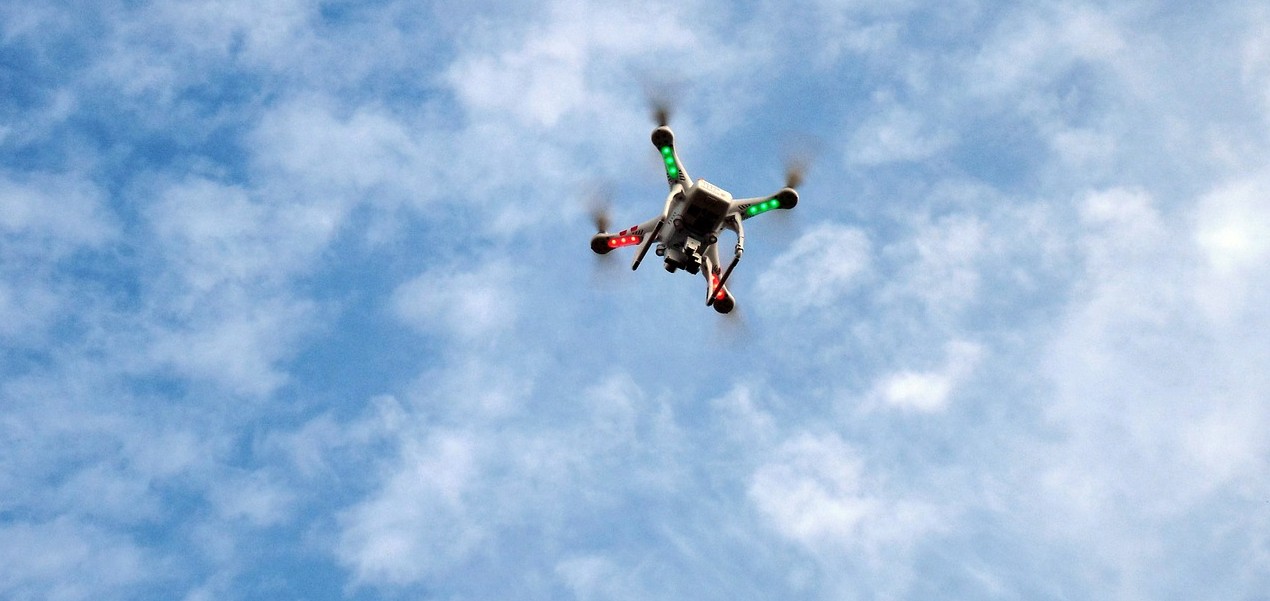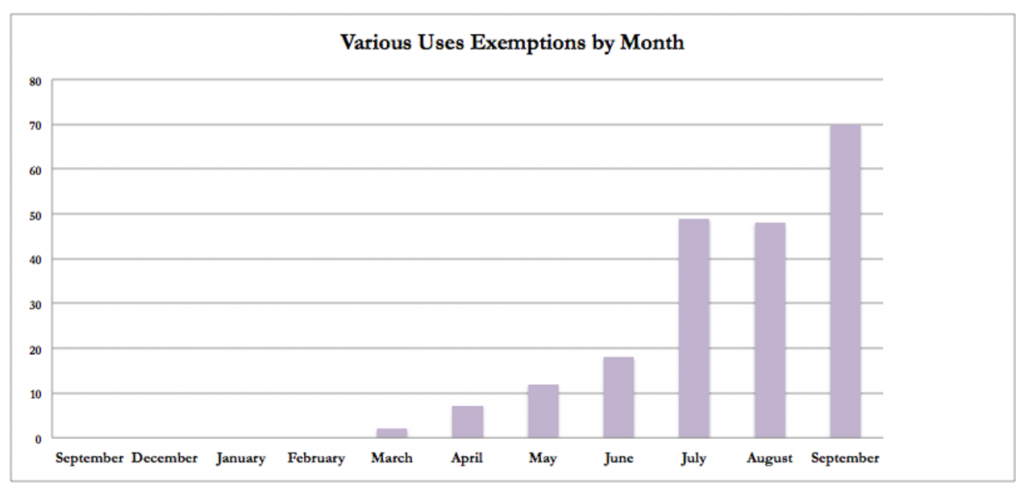Our report on all 333 exemptions issued in 2014 and 2015 is available here.
Until the Federal Aviation Administration implements comprehensive regulations for the use of unmanned aircraft within the U.S. sometime in 2016, only those companies in possession of a Section 333 exemption are permitted to operate drones commercially. The FAA began issuing 333 exemptions in September of 2014 as a stopgap measure to allow certain low-risk commercial drone operations while the industry waits for the full regulations. (All non-exempted, non-recreational drone operations are currently illegal). In order to receive an exemption, companies and individuals must describe, among other details, exactly what kind of drone they will be using and how they will be using it. Here, we have compiled data from all the Section 333 exemptions to date. This database, which includes, in addition to this information, the location of the exempted enterprise, the category of the application, and a description of the intended drone use, will be updated regularly as the FAA continues to issue new exemptions. The database allows you to track the commercial drone industry during this interim period. It affords us a view of the contours of commercial drone proliferation in its infancy, and provides a preview of what the industry will look like once those regulations are finally implemented.
[gview file=”http://dronecenter.bard.edu/files/2015/09/Master-333-Up-to-12-31-15-WEBSITE.pdf”]
Exemptions current up to December 31, 2015.
In the past few months, we have seen a new business model emerge with increasing frequency among Section 333 petitioners: companies and individuals offering a wide variety of drone services in a range of industries. This is a recent and significant development. The FAA requires petitioners to describe how they plan to use their drones commercially. This ensures that the exemption, once granted, only covers applications of the technology that the FAA deems to be safe and legal. Exemption holders are prohibited from using a drone for a service that they had not described in their application. So, for example, if a commercial drone user holds an exemption that lists “aerial photography and videography for real estate” as the only service covered by the exemption, that person cannot then use his or her drone to conduct aerial surveys for the oil and gas industry.
The first Section 333 exemptions, issued in September of 2014, only listed a single application. But it is natural for drone operators to wish to use their drones commercially for more than one kind of service. A single DJI Inspire is equally suitable for wedding photography and construction site monitoring. And so, petitioners might list a variety of ways in which they plan to use their drones. One common example is petitioners who state that they plan to use their drones for real estate photography, construction site surveys, and landscape photography—all of which are uses that fall within the property development industry.
But more recently, we have noticed a growing number of petitioners who are listing four or more planned uses for their drones. These users are not looking to use their drones in multiple similar ways, as in the case of the property development industry exemptions, but rather are looking to serve a range of industries including real estate, agriculture, utilities, events, sports, construction, and government contracting. Interestingly, many of these petitioners have been using a copy-and-pasted list to describe these intended applications. This appears to indicate a “drone for hire” business model, where petitioners list the widest possible variety of uses for drones in their exemptions, describing not what they specifically intend to use their drones for, but rather the services that they would be capable of offering if requested by a client. This differs significantly from a property development company that files a petition for real estate photography, construction surveys, and landscape photography.
We have tracked these “Various Uses” exemptions, which we have defined as exemptions that list four or more intended drone uses. We have found that a significant proportion of the most recent exemptions—fully one in five exemptions granted in September, 2015—are Various Uses exemptions. The first Various Uses exemptions were issued in March, 2015. Among the exemptions issued in March, April, May, and June 2015, only 39 (5.7% of all exemptions issued in that period) were Various Uses exemptions. Among the exemptions granted in July and August, 14.6% of the total exemptions issued in that period, were Various Uses exemptions. In September, 2015, 19.6% of all exemptions,were Various Uses exemptions. By September 30, the FAA had issued 206 Various Uses exemptions.
When we initially wrote about the FAA’s exemptions in April, 2015, only one hundred companies were permitted to fly drones commercially. Today, there are over 3,000 companies and that number is rising by as many as 50 new exemptions per week. Since April, we’ve seen a relatively consistent spread of companies per industry as well as a growth in exemptions for some fields like real estate. As the number of exempted companies continues to increase, we expect to see drones used in a growing number of ways and industries.
This database was first published on July 3, 2015. For our report on all 333 exemptions issued in 2014 and 2015, click here.
Project Leads: Arthur Holland Michel and Dan Gettinger
Contributors: Madi Garvin, Olive Kuhn, Tekendra Parmar, Rao Vinnakota, Duncan Barile, Rishi Mutalik, and Maggie Barnett.


